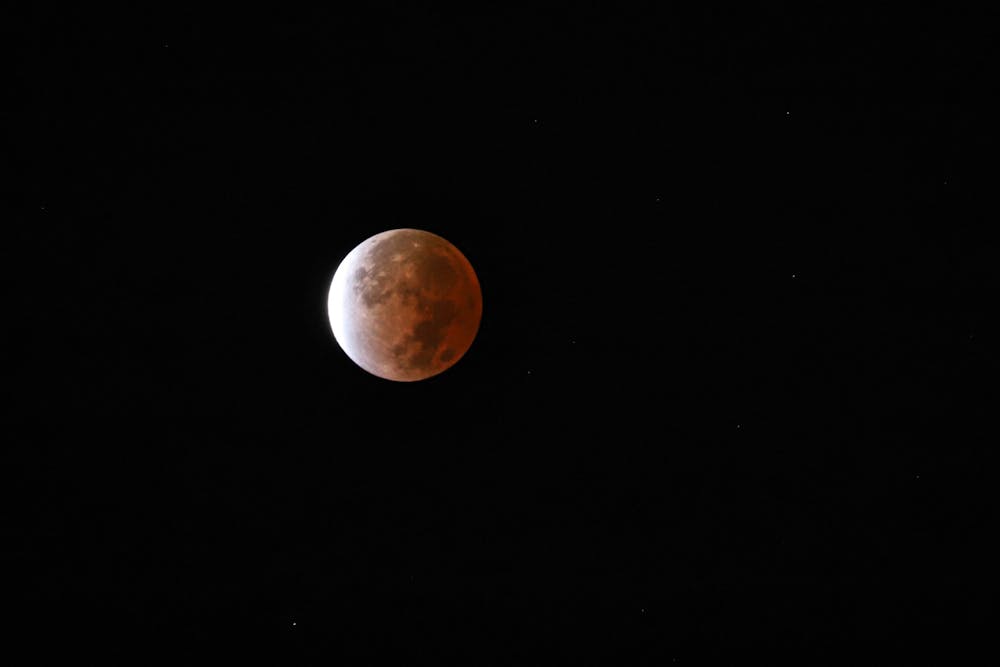A near-total lunar eclipse was visible in D.C. early Friday morning, giving night owls and early risers the opportunity to see the moon submerged in Earth’s shadow for the longest period in nearly 600 years.
The eclipse, which covered 99 percent of the moon’s surface at its 4:03 a.m. peak, lasted slightly longer than six hours and was visible across North America, South America, northern Asia and eastern Australia.
In D.C., the peak of the eclipse came as the moon descended to the west.
A handful of viewers at the National Mall watched as the moon, glowing orange, hovered above the Lincoln Memorial as it passed through the inner reaches of Earth’s shadow.
Madeline Marshall, an adjunct professor of visual storytelling at AU, had her camera and telescope set up near the Washington Monument.
“When there’s an eclipse, you come out to see the eclipse,” she said.
A lunar eclipse occurs when Earth blocks sunlight from reaching the moon’s surface directly. The moon, cast into Earth’s shadow, appears to change color because a small amount of sunlight reaches it through Earth’s atmosphere, which bends light to create red and orange hues. It’s the same process that causes colorful sunsets on Earth.
In contrast to a solar eclipse, when the moon briefly blocks most sunlight from reaching Earth, viewers need no special equipment to watch a lunar eclipse in its full glory.
This was the second lunar eclipse of 2021. The first, on May 26, lasted a more common two hours but was not visible on the East Coast.
The next lunar eclipse will be on May 15, 2022, and will be visible across eastern North America and all of South America.





